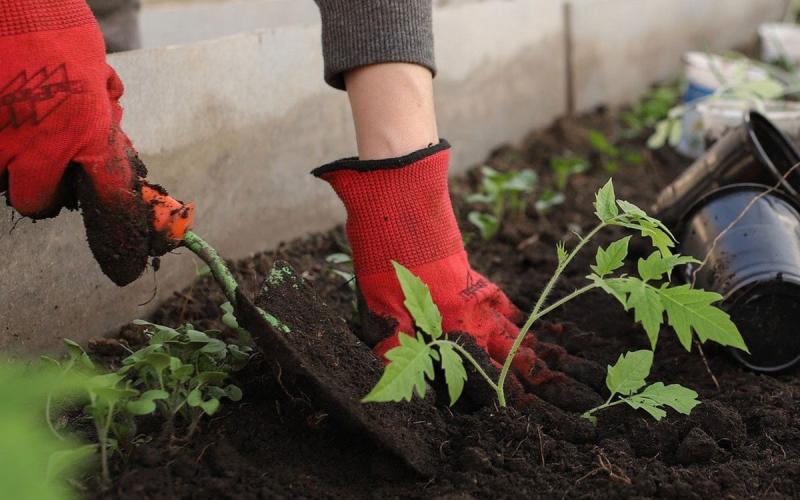Written collaboratively by Cody Molnar, Ciera Kotaska, Madalyn Shires, and Connie Strunk.
Aster yellows is a phytoplasmal disease carried and introduced by aster leafhopper. A phytoplasma is a specialized, wall-less bacteria-like organism. The phytoplasma responsible for causing aster yellows is ‘Candidatus Phytoplasma asteris’. The disease can be present on many row crops such as barley, canola, chickpeas, flax, peas, potatoes, wheat (confirmed in SD, 2024), and sunflowers. It is also present on many horticultural crops such as tomato, carrot, lettuce, daisy, marigold, petunia, coneflower (confirmed in SD, 2022-2025), snapdragon, chrysanthemum, zinnia, and other vegetables and flowers. Aster yellows is known to infect over 80 different plant families, as the aster leafhopper has extremely broad feeding habits. Many plants not listed are likely to be susceptible to infection but have not been reported yet.
Symptoms
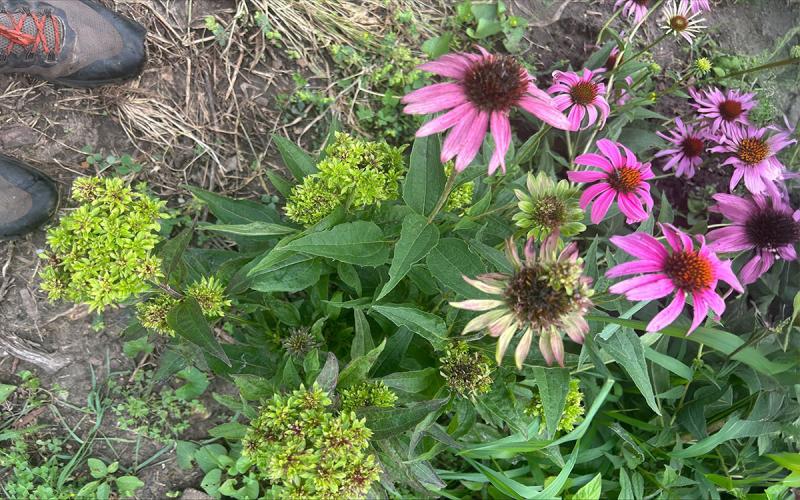
- Yellowed leaves and stems (Figure 1, Figure 2).
- Stunted growth (Figure 1, Figure 3).
- Phyllody (malformed, small and/or green flower tissues) (Figure 1).
- Leaves pale green to yellowish white (bleaching); some plants may have leaves turn a reddish purple (Figure 1).
- Witch’s broom (Figure 1, Figure 3).
- Abnormally bushy growth (Figure 3).
- Narrow angled joint spacing of leaves.
Symptoms can vary dramatically depending on host. For example, yellowing and stunting symptoms are more common on grasses and onions, while phyllody and witch’s brooms are more common on coneflowers and carrots. Many hosts can remain asymptomatic for some time, often several weeks, while some plants never develop symptoms despite being heavily infected. Often, only select branches and stems display symptoms. As phytoplasma are systemic pathogens, removing only the symptomatic portions of plants does not remove the infection and symptoms will reemerge.
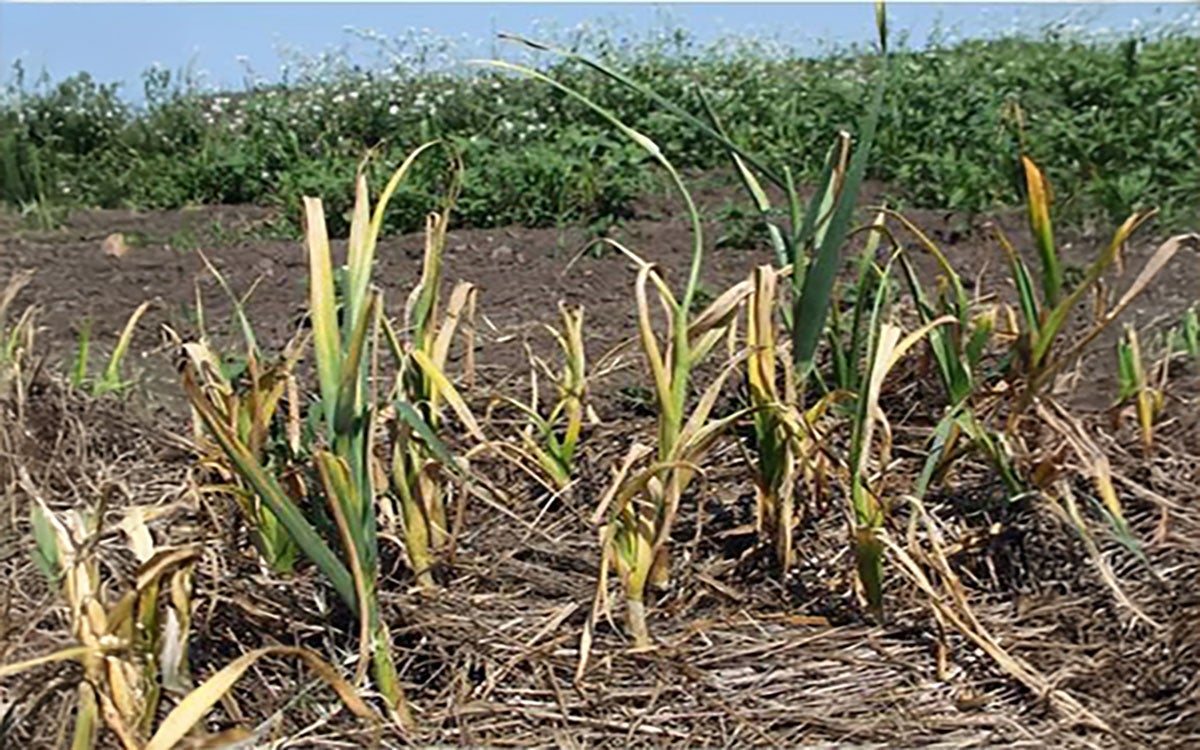
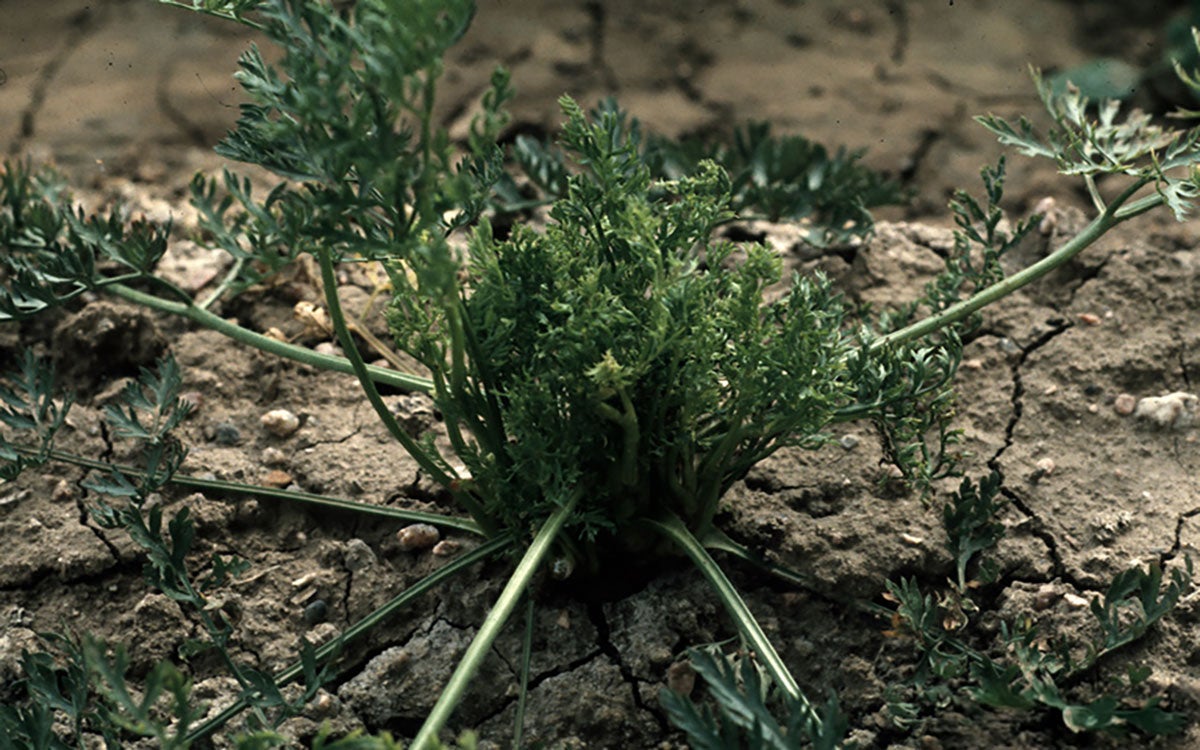
Prevention
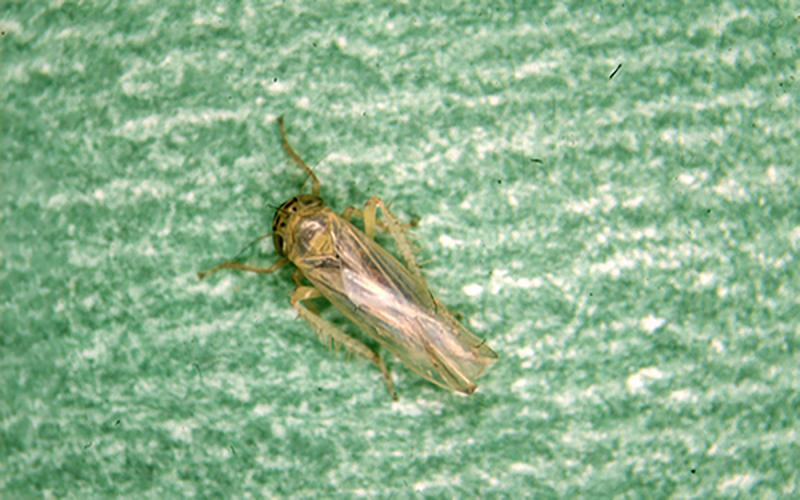
The key to preventing aster yellows is reducing the presence of the aster leafhopper and infected plants. If the leafhoppers are present, insecticide may be used as a control form. As leafhoppers (Figure 4) are highly mobile and are often blown in on wind, insecticides are generally not very effective unless applied regularly and consistently. If aster yellows is found, plant resistant varieties if available, remove perennial weeds in the area, and remove the infected plant(s). Unfortunately, few resistant varieties or even families of plants are known. While some web forums and other unverified sources list plants that are allegedly resistant, these claims have not been verified and should be treated with caution. Of these, Verbena, Salvia, Celosia, and Nicotiana are some plants claimed to be resistant or tolerant that have not yet been reported to be hosts. Woody perennials are generally not reported to be hosts. Infected plants can be buried in a compost pile or completely in the soil, as the phytoplasma is an obligate parasite and cannot live outside of a living host. Removal of infected perennials, especially perennial herbaceous weeds, is important because aster yellows can survive in the crown and roots of perennial plants for several years.
Control of the aster leafhopper can be done up to roughly 2 weeks prior to harvest. The aster leafhopper must have ingested the phytoplasma while feeding on an infected plant. Once ingested, it will take approximately two weeks before that leafhopper is able to infect other plants when feeding. Due to this two-week infection lag, treatment for aster leafhoppers does not need to occur within two weeks of harvest. Treatment of crops is mostly to limit symptom development, as infected plants produce less and have poor taste. Aster yellows may be more common when summers are cooler, as the phytoplasma struggles to be transmitted when temperatures are frequently above 90 F. It is important to note that full control of leafhoppers is very difficult and can be expensive. Only manage leafhoppers on high value plants and vegetables to limit loss of crops.
Aster yellows can be commonly confused with other viruses, disorders such as fasciation, and other insect vectored diseases. Phytoplasma can be very difficult to definitively diagnose by eye as so many other conditions can mimic their symptoms. If you are unsure of what is happening with your plant, consider sending a sample to the South Dakota State University Plant Diagnostic Clinic for fee-based disease confirmation of aster yellows or another disease or issue. Once it is identified, you will be able to move forward with the correct treatment.
Citations
- Aster Yellows of Wheat. Crop Protection Network. (2022, January 24).
- Aster Yellows. National Sunflower Association. (n.d.).
- Rodriguez Salamanca, L. M. (1970, January 1). Aster Yellows. Horticulture and Home Pest News.
- Schuh, M., & Grabowski, M. (n.d.). Aster Yellows. UMN Extension.
- Murral, Debra J., et al. Effects of temperature and vector age on transmission of two Ohio strains of aster yellows phytoplasma by the aster leafhopper (Homoptera: Cicadellidae). Journal of Economic Entomology 89.5 (1996): 1223-1232.
- Lee, I-M., et al. ‘Candidatus Phytoplasma asteris’, a novel phytoplasma taxon associated with aster yellows and related diseases. International journal of systematic and evolutionary microbiology 54.4 (2004): 1037-1048.
